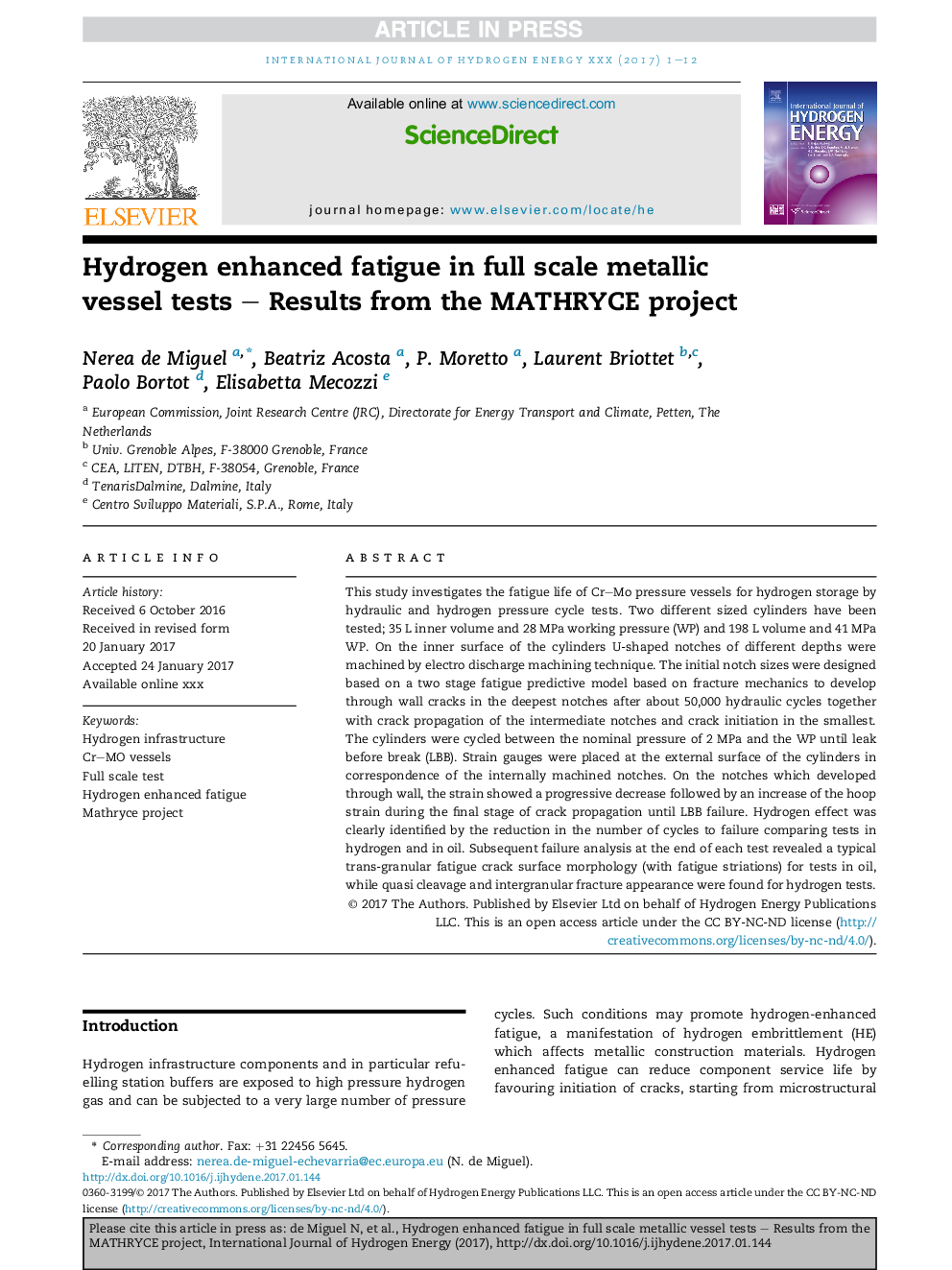| Article ID | Journal | Published Year | Pages | File Type |
|---|---|---|---|---|
| 5147324 | International Journal of Hydrogen Energy | 2017 | 12 Pages |
Abstract
This study investigates the fatigue life of CrMo pressure vessels for hydrogen storage by hydraulic and hydrogen pressure cycle tests. Two different sized cylinders have been tested; 35Â L inner volume and 28Â MPa working pressure (WP) and 198Â L volume and 41Â MPa WP. On the inner surface of the cylinders U-shaped notches of different depths were machined by electro discharge machining technique. The initial notch sizes were designed based on a two stage fatigue predictive model based on fracture mechanics to develop through wall cracks in the deepest notches after about 50,000 hydraulic cycles together with crack propagation of the intermediate notches and crack initiation in the smallest. The cylinders were cycled between the nominal pressure of 2Â MPa and the WP until leak before break (LBB). Strain gauges were placed at the external surface of the cylinders in correspondence of the internally machined notches. On the notches which developed through wall, the strain showed a progressive decrease followed by an increase of the hoop strain during the final stage of crack propagation until LBB failure. Hydrogen effect was clearly identified by the reduction in the number of cycles to failure comparing tests in hydrogen and in oil. Subsequent failure analysis at the end of each test revealed a typical trans-granular fatigue crack surface morphology (with fatigue striations) for tests in oil, while quasi cleavage and intergranular fracture appearance were found for hydrogen tests.
Related Topics
Physical Sciences and Engineering
Chemistry
Electrochemistry
Authors
Nerea de Miguel, Beatriz Acosta, P. Moretto, Laurent Briottet, Paolo Bortot, Elisabetta Mecozzi,
